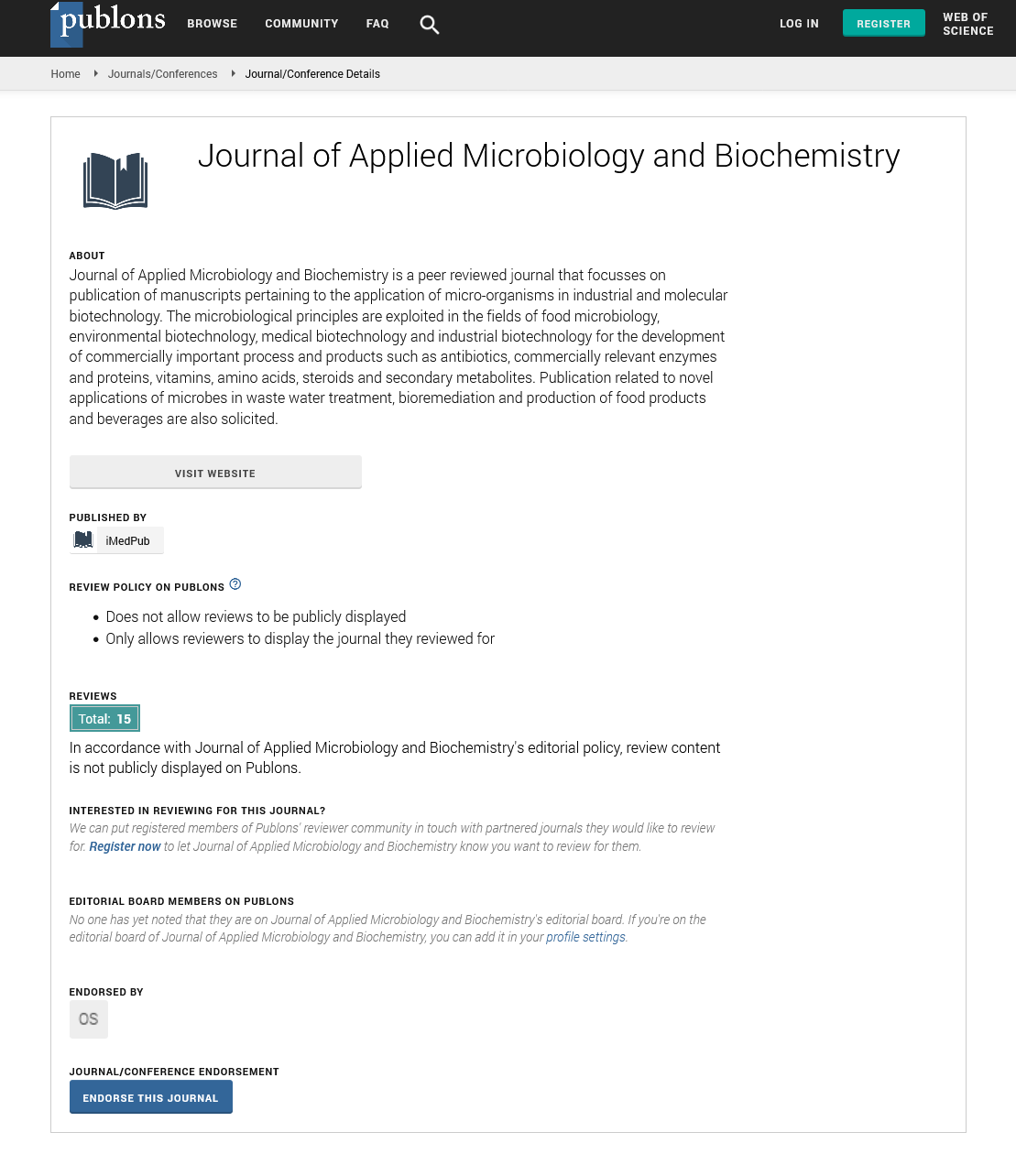ISSN : ISSN: 2576-1412
Journal of Applied Microbiology and Biochemistry
Abstract
The Interplay Between Phospholipid Turnover and Lipid Signaling Pathways
Phospholipids, the need building blocks of cellular membranes, play a dynamic role in maintaining cellular structure and function. Beyond their structural role, phospholipids are at the heart of intricate biochemical processes that regulate cellular communication, signal transduction and metabolic homeostasis. The turnover of phospholipids-the cycle of their synthesis, modification and degradation-is intricately linked to lipid signaling pathways. This interplay is fundamental to numerous physiological processes and is implicated in various diseases. This article describes the mechanisms of phospholipid turnover, its connection to lipid signaling, and its implications for health and disease. Phospholipid turnover involves the continuous remodeling of membrane lipids through synthesis, hydrolysis and reacylation. This process ensures the maintenance of membrane integrity and the production of signaling molecules. Key enzymes, such as phospholipases, acyltransferases, and kinases, mediate these transformations. Phospholipases are a class of enzymes that hydrolyze phospholipids into their constituent parts. For example, Phospholipase A2 (PLA2) cleaves the fatty acid at the sn-2 position, releasing lysophospholipids and free fatty acids like arachidonic acid. These products are precursors for eicosanoids, potent lipid mediators involved in inflammation and immune responses. The Lands cycle refers to the reacylation of lysophospholipids to regenerate phospholipids. This process is important for maintaining membrane asymmetry and fluidity. Acyltransferases catalyze the addition of specific fatty acids, influencing membrane properties and the production of signaling lipids. Phosphatidylinositol (PI) is a precursor for phosphoinositides, which are phosphorylated derivatives critical for intracellular signaling. Enzymes like phosphatidylinositol 4-kinase and Phosphatidylinositol-4,5- Bisphosphate 3-Kinase (PI3K) modulate PI levels, linking phospholipid turnover to cellular signaling cascades. Through these mechanisms, phospholipid turnover generates a dynamic pool of bioactive lipids that regulate numerous cellular processes. The tight regulation of these pathways ensures that cells respond appropriately to internal and external stimuli
Author(s): Pei-Yuan Qian
Abstract | PDF
Share This Article
Google Scholar citation report
Citations : 342
Journal of Applied Microbiology and Biochemistry received 342 citations as per Google Scholar report
Journal of Applied Microbiology and Biochemistry peer review process verified at publons
Abstracted/Indexed in
- Google Scholar
- China National Knowledge Infrastructure (CNKI)
- Cosmos IF
- Directory of Research Journal Indexing (DRJI)
- Publons
- Secret Search Engine Labs
Open Access Journals
- Aquaculture & Veterinary Science
- Chemistry & Chemical Sciences
- Clinical Sciences
- Engineering
- General Science
- Genetics & Molecular Biology
- Health Care & Nursing
- Immunology & Microbiology
- Materials Science
- Mathematics & Physics
- Medical Sciences
- Neurology & Psychiatry
- Oncology & Cancer Science
- Pharmaceutical Sciences
